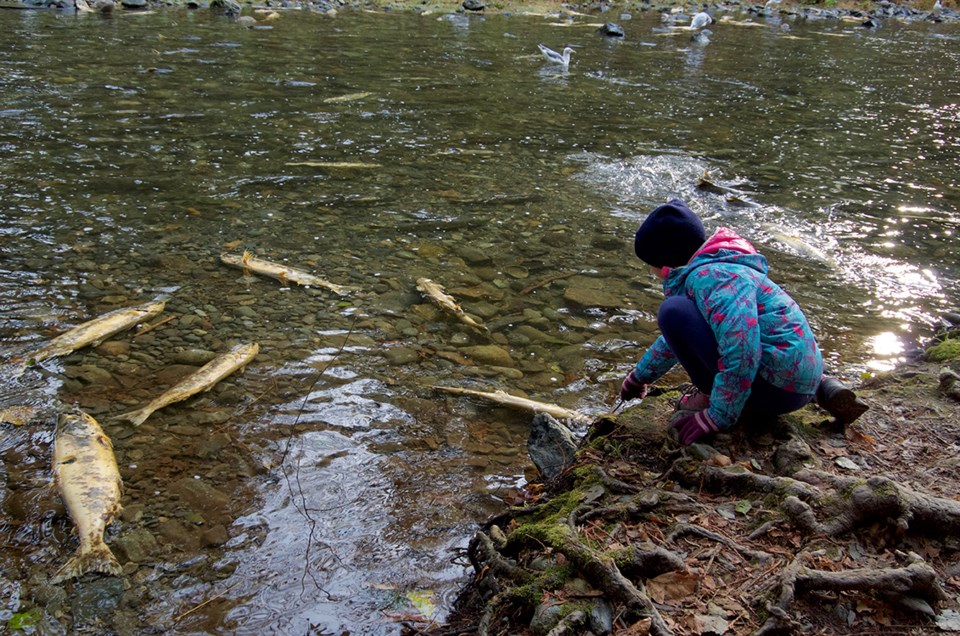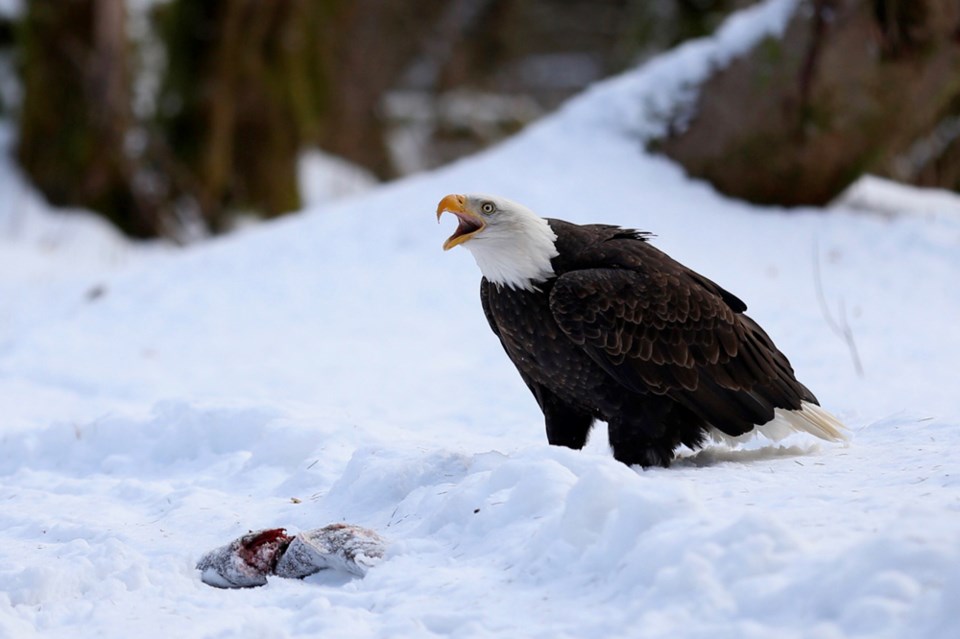Not only was the local Chum salmon return very low in 2018, but the spawning season was unusually early and short, according to Tenderfoot Creek Hatchery's annual report.
Hatchery staff counted approximately 2,000 chum salmon at their Tenderfoot Creek trap, well below the yearly average which is 5,000 to 6,000 salmon.
Also, the return's peak occurred about a week and a half earlier than usual.
"It was a very poor year," said Jordan Uittenbogaard, hatchery operations manager.
"Initially we thought that we were going to have an OK run. It was well on track, it came in the end of October really strong, which is early for the chum, and then about the middle of November, which should be the peak, they pretty much stopped."
"The back end of the whole run just never showed up."
Chum salmon are an "ecosystem driver," meaning that the success of the entire Squamish watershed largely relies on their survival.
Compared to the other four species of salmon that return to the Squamish watershed to spawn (coho, pink, sockeye, chinook), chum have a more fatty, oily flesh, resulting in a higher nutrient load which is a draw for other animals, including insects, mammals, and birds.
Chum is the first salmon species to spawn and die during the region's spawning season. Over the winter, their carcasses degrade, feeding insects and providing nutrient-rich larvae for the following juvenile species to feed on.
"So, a good strong chum run is going to rear strong coho and chinook juveniles," said Uittenbogaard, "it all kind of intertwines."
The hatchery has been focussing mostly on chum and chinook conservation, with the chum program started by the federal government in 2012, in response to declining numbers.
Staff collect and count spawning fish each year, fertilize and hatch the eggs at the facility, then distribute fry into Squamish creeks and rivers on a four-year cycle.
The aim of the program is to bring chum numbers back to historical levels.
Uittenbogaard believes this goal will be a long-term project.
"The fish returns in the last ten years since I've been working at Tenderfoot has been so unpredictable," he said. "You've had poor, poor years, and then you'll have the best year on record. It's just becoming so unpredictable."
For example, 2016 saw a record return of 26,000 chum salmon, the highest number recorded since the hatchery started counting in 1981.
Uittenbogaard says that while there are many theories around why the salmon returns are so unpredictable, it is hard to pinpoint a cause, as it's too recent a phenomenon.
After eggs are incubated and hatched, the five on-site hatchery staff raise the fry for one month. They are then released into targeted Squamish streams and creeks.
Because of limited impacts such as predation, lack of nutrition, and environmental disturbances, salmon raised in a hatchery fare much better than their wild counterparts, achieving higher survival rates.
Released fry "imprint" on their home streams through unique smells and environmental cues, and return after three to four years of feeding in the ocean.
Hatchery staff conduct stream walk surveys each fall in their enhanced waterways, and after four years, the program rotates to a new set of targeted creeks and streams.
While the program is still in its early years, and even with seemingly declining numbers, Uittenbogaard is optimistic.
"I'm always hopeful, I think what the hatchery is doing is definitely working. I've seen it myself," he said.
"It's such rewarding work, I've seen a stream where there are very few chum salmon and very few wildlife even, and then when our hatchery fish return, the creek is just full of chum, there are eagles around, there's tons of bear activity."
All of the creeks, which the Tenderfoot Hatchery targets, are urban, meaning they are running through populated or developed areas.
This can have an effect on the success of salmon returning to these waterways.
"It's a struggle for them because of a little bit of pollution, people releasing their hot tubs into these little creeks," said Uittenbogaard.
"I think a lot of it is people just aren't aware, that that little swamp or that little creek that your house is along, actually holds a viable salmon population."




